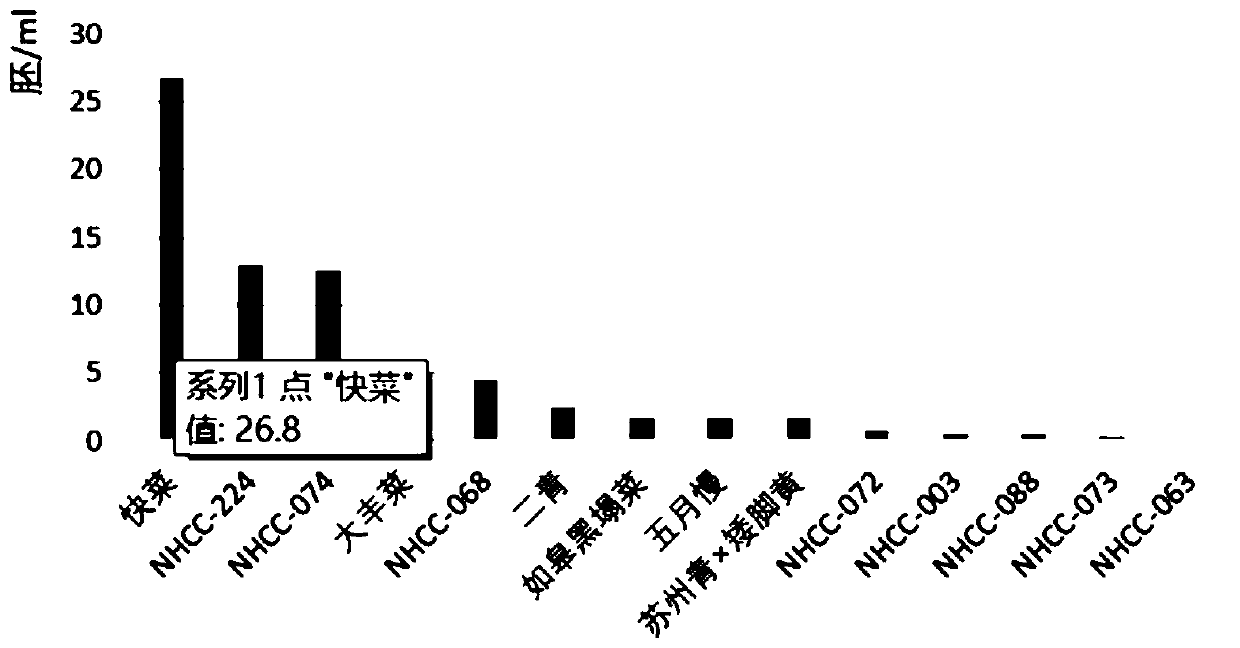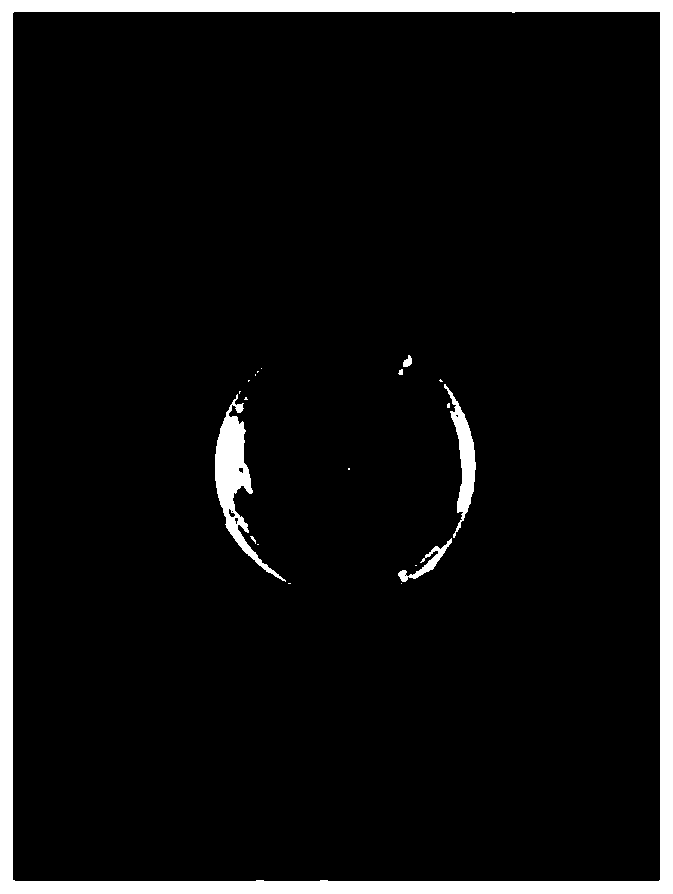Method for increasing non-heading Chinese cabbage microspore embryo induction rate
A technology for head cabbage and embryo induction, which is applied in horticultural methods, botanical equipment and methods, horticulture, etc., and can solve the problems of time-consuming, labor-intensive, inaccurate, etc.
- Summary
- Abstract
- Description
- Claims
- Application Information
AI Technical Summary
Problems solved by technology
Method used
Image
Examples
Embodiment 1
[0041] 1. Selection of flower buds: Collect samples from 9:00 to 11:00 in the morning, select flower buds (about 2-3mm) with a ratio of petals to anthers close to 1:1, add a small amount of distilled water and store in a 4°C refrigerator.
[0042] 2. Cultivate microspore embryos: Put the collected samples into a 2ml centrifuge tube, directly add 1% sodium hypochlorite for disinfection for 20 minutes, wash with sterilized water twice for 5 minutes each, and use 1 / 2NLN for the last time -13 for rinsing. Transfer the cleaned sample to the test tube of the sample grinding machine (German IKA control type test tube disperser S025), add a small amount of 1 / 2NLN-13, and grind the sample to make the sample fully ground. Prepare a 50mL centrifuge tube, place a 40μm cell filter plug on top of it to filter, centrifuge, pour off the supernatant, then add 1 / 2NLN-13, shake and shake well, then centrifuge, pour off the supernatant, leaving a yellow-green precipitate . Then add a small amou...
Embodiment 2
[0045] Embodiment 2: the cultivation of microspores of non-heading Chinese cabbage of different varieties
[0046] Select 14 different varieties (Kaicai, Wuyueman, NHCC-224, Suzhouqing×Aijiaohuang, NHCC-074, NHCC-072, Dafengcai, NHCC-003, NHCC-068, NHCC-088, Erqing . Among them, 'Kaicai', 'NHCC-224', 'NHCC-074', 'Dafengcai', 'NHCC-068' and 'Erqing' are easy-to-embryo varieties, 'Rugao Heitacai', 'Mayuecai' Manman', 'Suzhouqing×Aijiaohuang' are varieties that can produce embryos, and 'NHCC-072', 'NHCC-003', 'NHCC-088', 'NHCC-073', 'NHCC-063' are not easy to produce embryos Variety. Such as figure 1 , such as comparing the results of embryo emergence, among the 14 selected varieties, the embryo emergence rate reached 100%, among which 5 varieties that were not easy to emerge embryos all emerged embryos, and the varieties 'Kaicai' and 'NHCC-224' that were easy to emerge embryos were respectively 26.8 embryos / ml and 12.9 embryos / ml were achieved.
Embodiment 3
[0047] Example 3: Effects of 6-BA and ascorbic acid on the microspore germination rate of non-heading Chinese cabbage
[0048] Selected 'NHCC-224' with a high embryo emergence rate, and carried out research on the microspore embryo emergence rate of 6-BA and ascorbic acid, as shown in Table 1, divided into four cases, control, only 6-BA added, only ascorbic acid added , and adding 6-BA and ascorbic acid at the same time, the comparison results can be found that when nothing is added, the embryo emergence rate of the two varieties is very low, after adding 6-BA and 20mg / L or 30mg / L of ascorbic acid respectively, All of them have different degrees of improvement in the embryo emergence rate, and adding more than 30mg / L ascorbic acid will inhibit the embryo emergence; while adding 6-BA and 20mg / L or 30mg / L ascorbic acid at the same time, the embryo emergence rate will increase again, while Adding 0.08mg / L6-BA and 20mg / L ascorbic acid was the highest rate of embryo emergence, near...
PUM
| Property | Measurement | Unit |
|---|---|---|
| Diameter | aaaaa | aaaaa |
Abstract
Description
Claims
Application Information
 Login to View More
Login to View More - R&D
- Intellectual Property
- Life Sciences
- Materials
- Tech Scout
- Unparalleled Data Quality
- Higher Quality Content
- 60% Fewer Hallucinations
Browse by: Latest US Patents, China's latest patents, Technical Efficacy Thesaurus, Application Domain, Technology Topic, Popular Technical Reports.
© 2025 PatSnap. All rights reserved.Legal|Privacy policy|Modern Slavery Act Transparency Statement|Sitemap|About US| Contact US: help@patsnap.com



